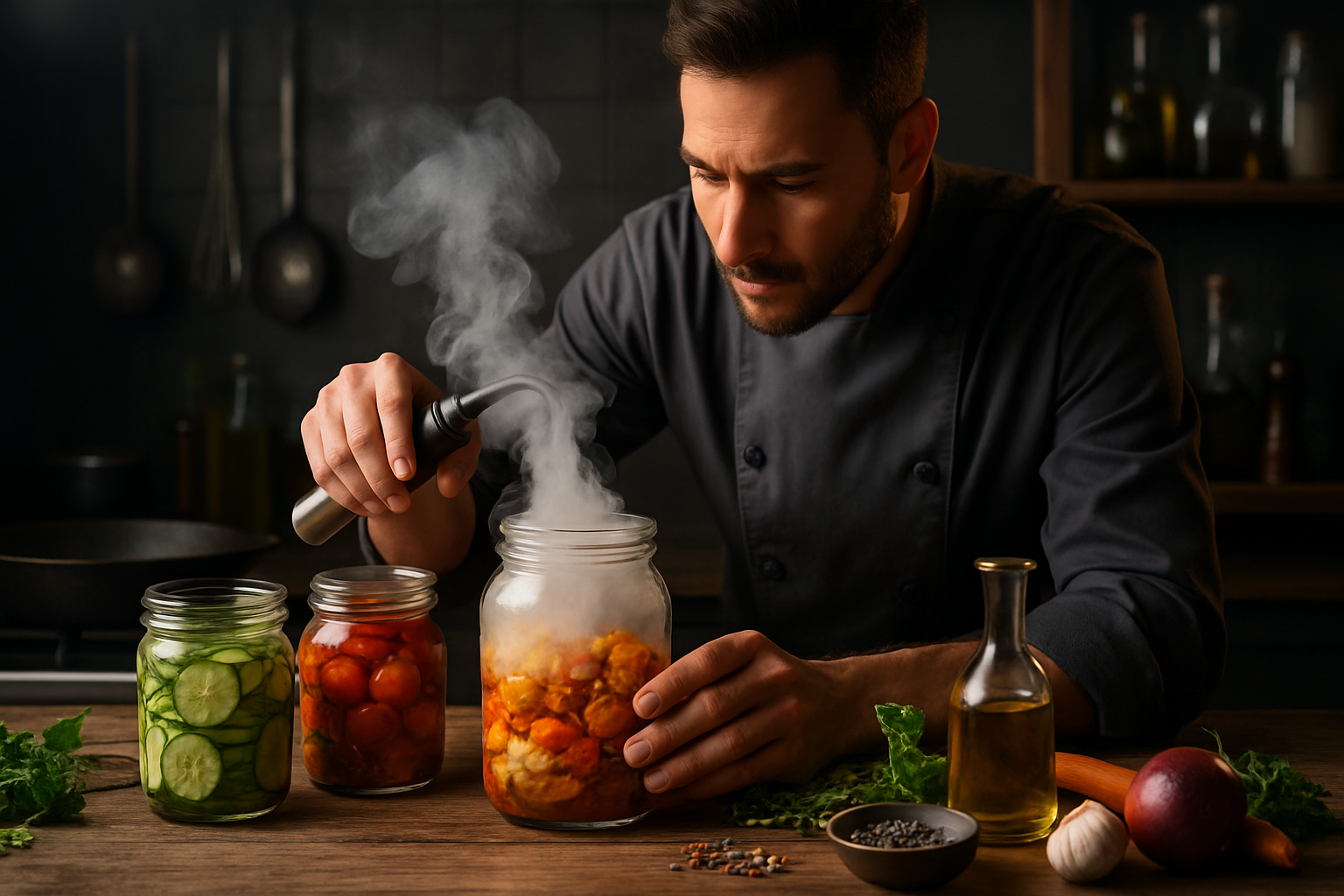Culinary Alchemy: Transforming Everyday Ingredients
Embark on a gastronomic adventure as we explore the art of culinary alchemy. Discover how ordinary ingredients can be transformed into extraordinary dishes through innovative techniques and creative pairings. From humble vegetables to pantry staples, learn to elevate your cooking and surprise your taste buds with unexpected flavor combinations.

Unexpected Ingredient Pairings
One of the most exciting aspects of culinary alchemy is the exploration of unexpected ingredient pairings. By combining flavors and textures that might seem incompatible at first glance, chefs can create dishes that surprise and delight the palate. Consider the classic combination of chocolate and chili, which balances sweetness with heat to create a complex, multi-layered flavor profile. Or the pairing of watermelon and feta cheese, where the juicy sweetness of the fruit is perfectly complemented by the salty tang of the cheese. These unconventional combinations challenge our preconceptions about what “goes together” and open up new possibilities in the kitchen. Experimenting with unexpected pairings can lead to culinary breakthroughs and signature dishes that set your cooking apart. The key is to approach ingredients with an open mind and a willingness to take risks.
Texture Transformation Techniques
Texture plays a crucial role in our perception of food, and mastering texture transformation is a key aspect of culinary alchemy. By altering the physical structure of ingredients, chefs can create entirely new eating experiences. One popular technique is spherification, which uses sodium alginate and calcium chloride to create liquid-filled spheres that burst in the mouth. This molecular gastronomy technique can transform liquids like fruit juices or sauces into caviar-like pearls, adding an element of surprise and luxury to dishes. Another transformative technique is dehydration, which concentrates flavors and creates crispy textures from fruits and vegetables. For example, dehydrated tomato skins can be ground into an intensely flavored powder, while fruit leather offers a chewy, portable snack. By experimenting with these and other texture-altering techniques, home cooks can add new dimensions to their culinary creations.
The Role of Fermentation in Flavor Development
Fermentation is a time-honored technique that has been used for millennia to preserve food and develop complex flavors. In the context of culinary alchemy, fermentation offers a powerful tool for transforming ordinary ingredients into extraordinary flavor bombs. The process of fermentation involves microorganisms breaking down sugars and starches, producing lactic acid and other compounds that contribute to unique flavor profiles. Kimchi, for example, transforms humble cabbage into a spicy, tangy, and complex side dish that’s beloved in Korean cuisine. Similarly, the fermentation of soybeans creates miso, a versatile ingredient that adds depth and umami to a wide range of dishes. By incorporating fermented ingredients or experimenting with fermentation at home, cooks can access a whole new palette of flavors and elevate their culinary creations to new heights.
Culinary Alchemy in Beverage Creation
The principles of culinary alchemy extend beyond solid foods into the realm of beverages, where creative mixologists are pushing the boundaries of flavor and presentation. One exciting trend is the use of culinary techniques in cocktail creation, such as fat-washing spirits to infuse them with savory flavors like bacon or olive oil. Another innovative approach is the use of clarification techniques to create crystal-clear versions of traditionally opaque drinks, such as milk punch. In the non-alcoholic sphere, mixologists are experimenting with kombucha, kefir, and other fermented beverages to create complex, layered drinks that rival their alcoholic counterparts in sophistication. By applying culinary techniques to beverage creation, bartenders and home enthusiasts alike can craft unique drinks that challenge expectations and delight the senses.
Useful Tips & Facts
• Experiment with different cooking methods to transform ingredients: roasting, grilling, and smoking can all dramatically alter flavors.
• Use a sous vide machine to precisely control temperature and texture in meats and vegetables.
• Try using unconventional ingredients as seasonings, such as coffee grounds in meat rubs or lavender in desserts.
• Explore the world of edible flowers to add visual appeal and unique flavors to your dishes.
• Invest in a dehydrator to create your own flavor-packed powders and snacks from fruits and vegetables.
• Learn about the five basic tastes (sweet, sour, salty, bitter, and umami) and how to balance them in your cooking.
• Don’t be afraid to combine cuisines – fusion cooking can lead to exciting new flavor combinations.
Culinary alchemy is an exciting frontier in the world of gastronomy, offering endless possibilities for creative cooks to explore. By understanding the principles of flavor transformation, experimenting with unexpected pairings, and mastering techniques that alter texture and taste, home cooks can elevate their culinary creations from ordinary to extraordinary. Whether you’re fermenting your own kimchi, crafting crystal-clear cocktails, or simply finding new ways to prepare familiar ingredients, the art of culinary alchemy invites you to push boundaries and challenge your taste buds. So roll up your sleeves, fire up your imagination, and get ready to transform your kitchen into a laboratory of delicious discoveries.





